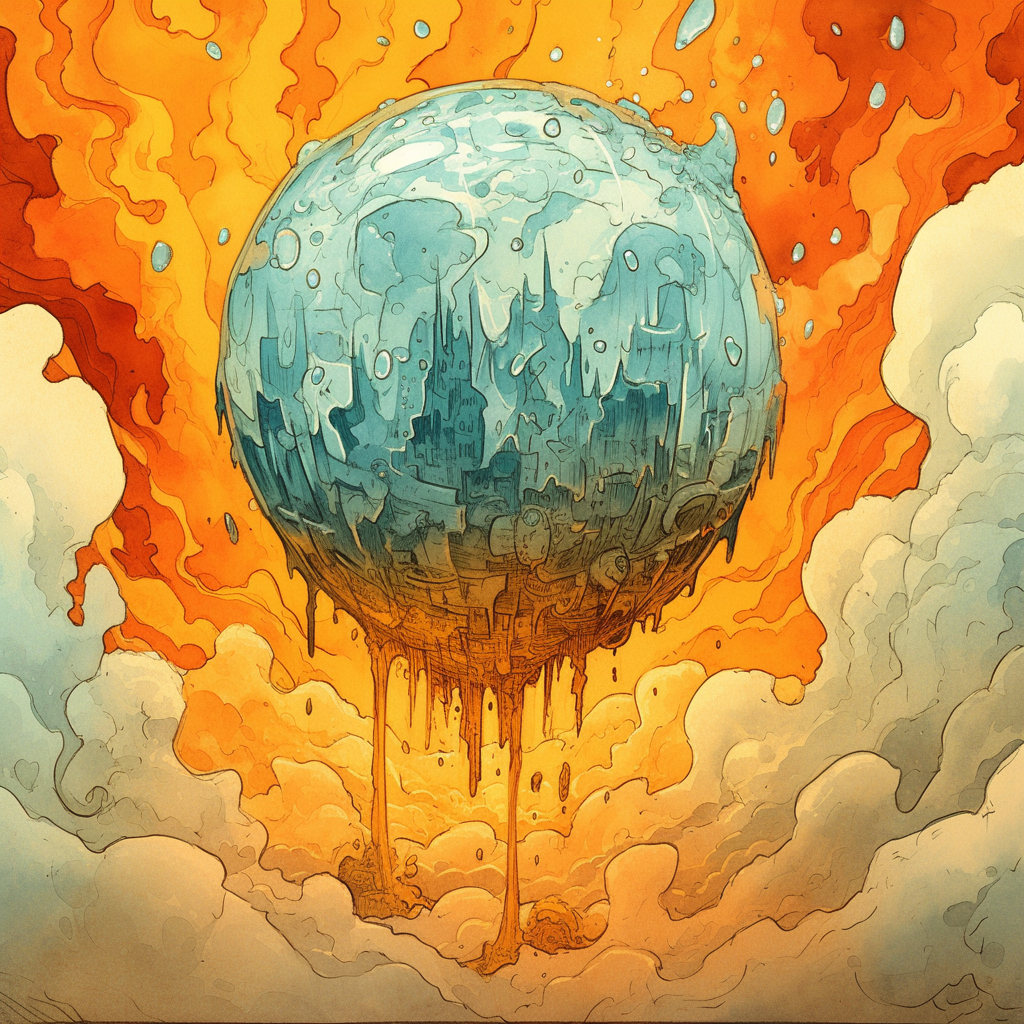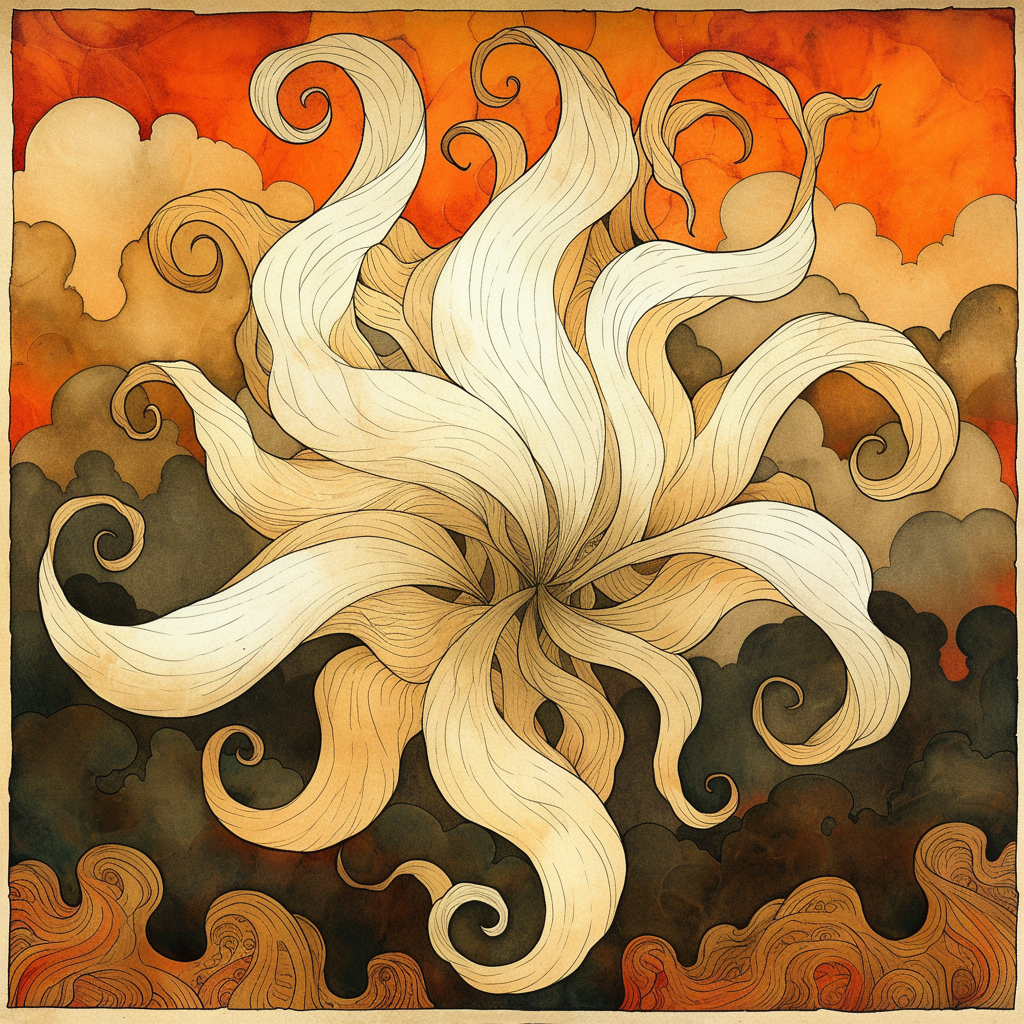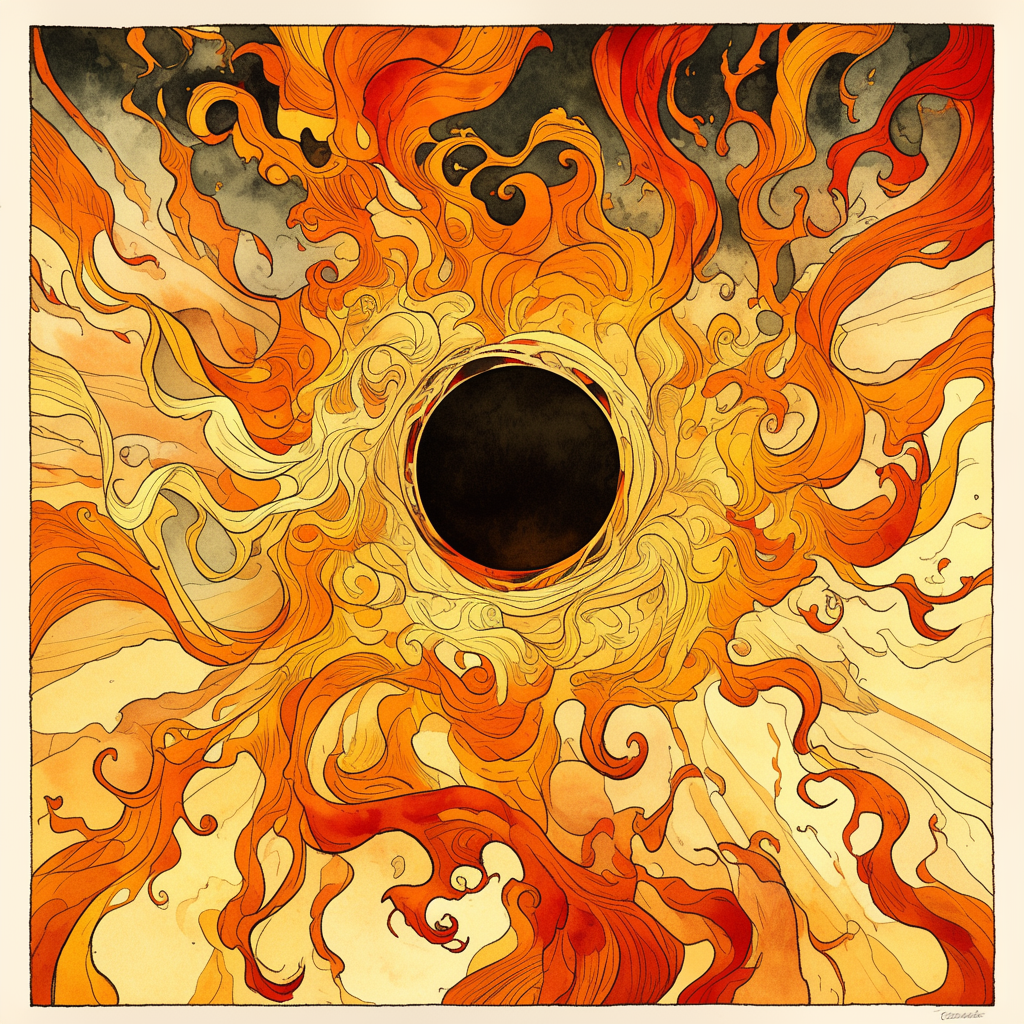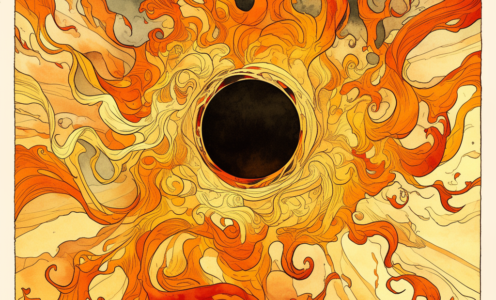[ Fire ] [ Regions | Pockets | Locations | Powers | Clans | Bestiary | Flora ]
Elemental Pockets in Fire

Elemental pockets form when cracks appear between two Inner Planes. This can be caused by traumatic damage to the fabric of the plane from battle, magic, or occasionally the mischief of an entrope. Trans-planar leakage then leads to a lump of elemental matter slowly forms around the point of damage. As one would expect, the environment of Fire is quite hostile to any foreign matter. New, rapidly expanding pockets may maintain their cores, where cool air, solid earth and liquid water still exist, but once the link between the pocket and the plane of origin is weakened, a pocket quickly gives in to the heat. The conditions in and around a pocket obviously depend on the element that’s leaking into the Crematorium. Here are some examples of elemental pockets:

Earth, Magma, Mineral, Salt and Dust pockets melt into magma and (if they appear in the skies) fall down as the rain of molten stone. Only volcanic rocks are able to withstand the intensity of Fire and retain their solidity, and these pockets are highly valued by natives as convenient sources of building materials.
Water, Ice, Ooze and Steam pockets evaporate very quickly, creating clouds of superheated steam that dissipates in the atmosphere. Most elemental creatures avoid these pockets, since water is often harmful to them. Ooze pockets with a high content of clay can sometimes end up dried and glazed by the fire, ending up as islands of solid ceramic in the flaming ocean.
While they are growing, Air and even Lightning pockets can be a respite from all the fire. But once exhausted, they too feed the flames. In these areas fire burns brighter and hotter. This burning has an another effect though—stoked flames rise upwards, as the surrounding fire rushes to take its place. In the end, something akin to a waterspout forms from pure elemental fire.

Similar to whirlwinds in the plane of Air, in the Crematorium fire twists and turns around “pockets” of Vacuum, forming huge whirlpools of flames. Fortunately, since the atmosphere of gaseous fires is much less dense, these tornadoes are less dangerous than other similar natural disasters and can be resisted by most creatures. It is possible for Air or Vacuum pockets to form deep in the solid fire layer, creating natural caverns, but, as explained above, this region is underexplored.
Newly formed pockets of Ash are cold (relatively speaking), but they can quickly reignite. When a pocket of Ash forms in the skies, it becomes a cloud that rains smouldering ash down like a blizzard. On the ground this leaves a fine coating of ash that looks like surreal snow.
Now pockets of Radiance are not only resistant to the heat, but can be even hotter than their surroundings. These balls of searing plasma, seemingly unaffected by gravity, are called Inferno Stars by the natives and often mistaken for a Sun by Prime visitors. Inferno Stars exude searing and blinding light. Once the crack between two planes is closed, a pocket of Radiance disperses very quickly. [5e: Each minute creatures in a 500 feet radius around them must make a DC 18 Constitution Saving throw or take 2d10 radiant damage and be blinded for 10 minutes. If they fail three of these saves in a row, they are permanently blinded.]

Pockets of Positive Energy look and behave very similarly to inferno stars, and mechanically they follow the same rules. However, military groups of the Plane often seek these pockets and ruthlessly fight for them. If one army can secure Positive Energy and channel its potential healing properties, it would be able to create a powerful citadel and a haven for wounded soldiers.
Meanwhile, pockets of Negative Energy look like giant spheres of darkness. These pockets are surrounded by ominous cold dark flames that deal necrotic damage to all living creatures and heal undead. Fire necromentals and undead such as flameskulls and combusted frequently infest these places. Even after the pocket is extinguished, darkfire can persist for months and years.
When Feywild energies imbue the fire of this plane, flames begin to dance and take the shape of fantastic multicoloured figures. Fey creatures who flock to these places are pyroeads and firetails. Some claim that salamanders or even tome guardians can also trace their ancestry to fair folk, but there’s little proof of this.
Shadowfell pseudo-pockets appear as regions of grey shadowy fire. These flames are very cold for natives (10 degrees celsius). Obviously, all inhabitants of the Plane of Fire avoid these places, but even for visitors they aren’t safe—terrifying pyre elementals, who are immune to both fire and cold, stalk these grim places. [5e: Even non-native creatures with magical protection will take 6d10 cold damage upon entering the area and suffering a shocking change. Moreover, shadow-touched areas are full of so-called ebony motes—strange formless shadows that move erratically through the landscape and do 2d10 cold damage upon contact (DC 15 Constitution Save for half damage].
Sources: Margarita and Jon Winter-Holt


